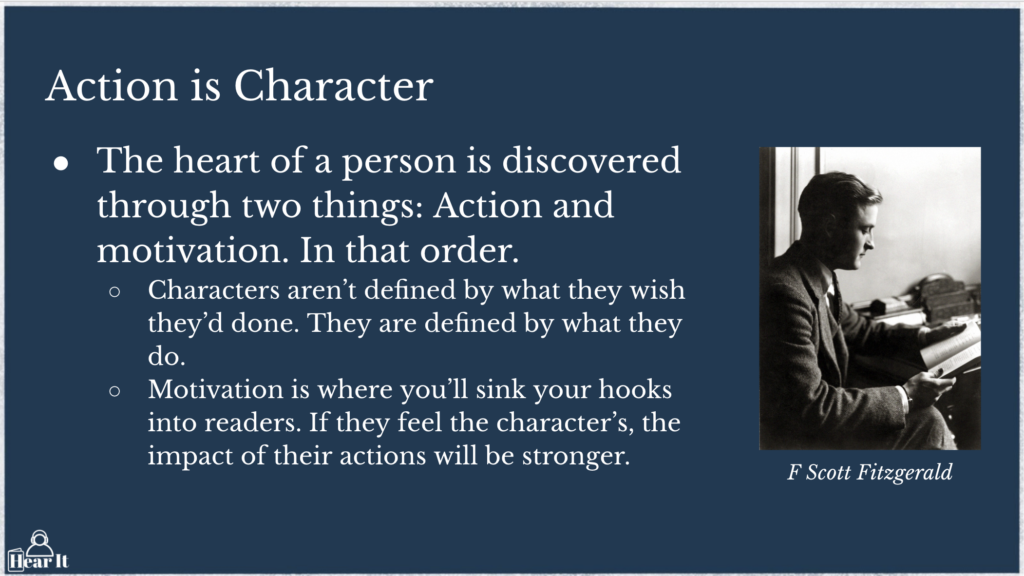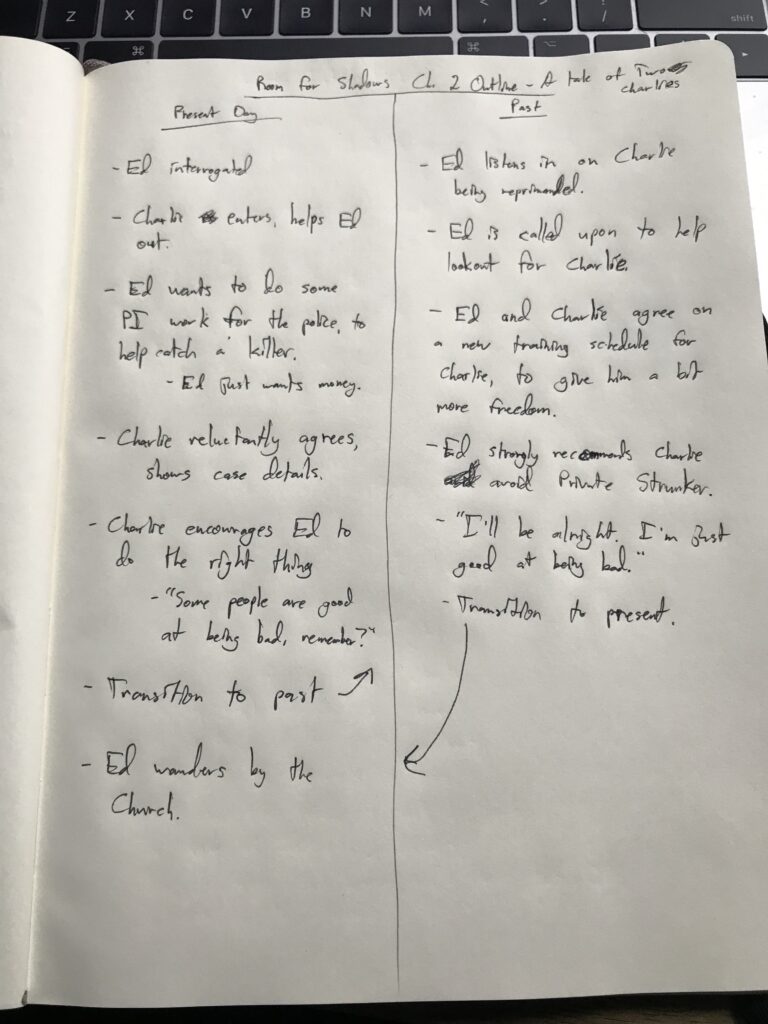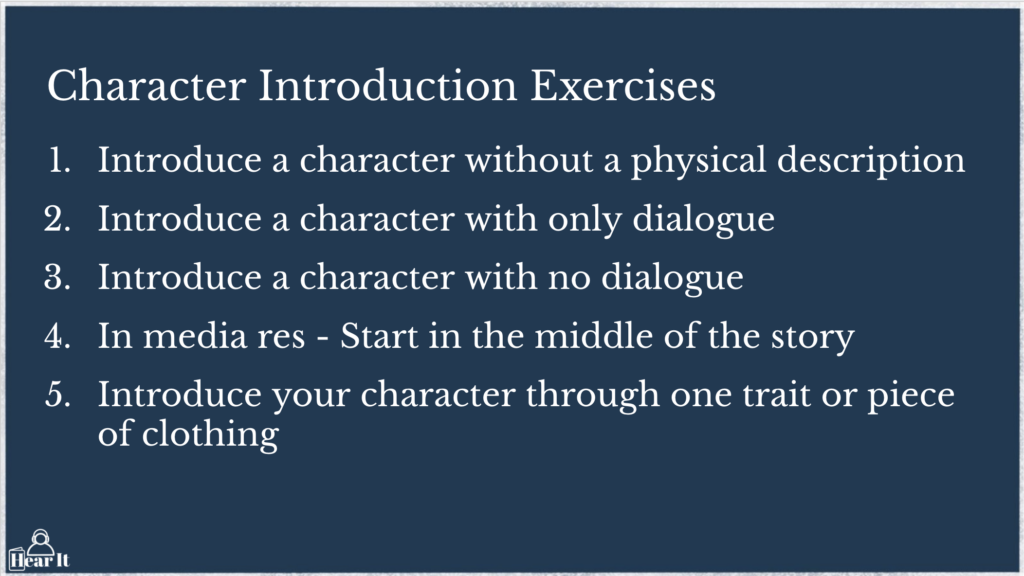Are you struggling to introduce a new character in your novel, short story, or play? Would you rather skip over the introductions and get straight to the action?
There are a ton of different ways to start a story and introduce a character, but ultimately, characters are the most important part of your story and need to be well-developed to really connect with an audience.
Character Introductions Video
The Road to Deep Character Development
If your character is going to evolve, he or she needs to start out in one place and head to another, so establishing your character is critical to successful storytelling.
The Importance of Character Introductions
Your characters are the heart of your book. When someone says they love a book, they usually mean they love the characters. They connected in a deeply personal and emotional way. Writing has that power. A strong introduction gets your reader invested in the story right away.
Like any first impression, character introductions have an oversized impact on how people will feel about your character. What is your goal with this introduction?
- Do you want readers to like your character?
- Root for them?
- Hurt with them?
- Hate them?
Action is character

F. Scott Fitzgerald had that written above his writing desk when he was working on his last novel. There are a lot of details you can add to a character, but the true heart of a person is seen through two things: Action and motivation. In that order.
- Action is first. Characters aren’t what they wished they’d done. Characters are what they do. Did your character do something especially brave, noble, or self-sacrificing?
- Motivation is second. Why did they do what they did? Motivation is where you’ll sink your hooks into the readers’ hearts.
To Plan or Not to Plan?
Some writers choose to write by the seat of their pants, and that’s great, but I like to know where I’m going as I write. If you know what the big action/decision is going to be later in the story, you can foreshadow and really hammer home where your character is at the start of the story.

The above is an example from my second novel, Room for Shadows. Each chapter of the book has a story set in the novel’s present, and a flashback sequence to a related event earlier in my main character’s life.
In the second chapter, I introduce Charlie, an important supporting character. I want the reader to see him as an honest, hardworking Chicago Police detective. He helps Ed out of an interrogation, and introduces a central component of the plot – someone is abducting young women from the North Side of the city, taking them to a remote area in a Michigan forest and crucifying them.
There are a number of important details about the case I want readers to know, but this chapter is more about Ed and Charlie’s friendship, and how that friendship has evolved over time.
The flashback sequence goes back to their first meeting. They were in the Army, and Ed was brought in by his commanding officer to take Charlie under his wing. When they first met, Charlie needed Ed’s help. By the present day, Ed is the one in trouble and needs Charlie to bail him out. The reason for this switch will be explored throughout the story as Ed tries to rediscover hope and redemption.
So I’m introducing Charlie twice, and the different situations help bring both Charlie and Ed to life, while also (hopefully) enticing the reader to learn more.
Character Introduction Writing Tips

- Go easy on physical descriptions. Unless you happen to have a flair for pretty prose, whether someone’s hair is wavy or straight is probably not terribly important to the character or story.
- Include conflict right off the bat – Your character has to WANT something, and there should be some obstacle to getting it. Kurt Vonnegut, one of the great writing teachers of all time, said it doesn’t matter what your character wants, it could be a cup of coffee, but they have to want something.
- Start with action, let us learn why later – Action doesn’t mean “He walked down the stairs and around the corner” but rather a real decisive action like breaking up with a girlfriend, quitting or accepting a job, which is how I introduced Chris in my first novel, Auto Clarity, as the first story is him learning about a new company and their software, and while he tells himself he’s just going to listen and not take the job, he ultimately does. This sets him up as a believer, as someone who can get caught up in the dream, or in dreaming, and take a job he maybe shouldn’t.
Character Introduction and Development Writing Exercises

- Introduce a character without any physical description
- Introduce a character with only dialogue
- Introduce a character with no dialogue
- In media res – Add a short intro short story to the beginning of your novel to fully explain all the things you want to say about your character. Continue the novel as if people got everything from that short story, then don’t include it in the story. Make it superfluous and kill your darling. In media res stories, which start in the middle of the action, can quickly immerse readers in a story. Write the first part, chop it off, and let your readers catch up. Make sure you cut right before something really exciting early in your story so your readers are immediately thrown into the story.
- Introduce your character through one trait or piece of clothing – Detail on exactly how a character gets themselves ready in the morning, or how they tie their tie meticulously, etc., can be intriguing and draw in readers. Try to make the item or trait important to the story as well as reflective of the character.


